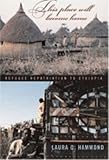This Place Will Become Home : Refugee Repatriation to Ethiopia / Laura C. Hammond.
Material type: TextPublisher: Ithaca, NY : Cornell University Press, [2018]Copyright date: ©2004Description: 1 online resource (272 p.) : 4 charts/graphs, 3 maps, 14 halftonesContent type:
TextPublisher: Ithaca, NY : Cornell University Press, [2018]Copyright date: ©2004Description: 1 online resource (272 p.) : 4 charts/graphs, 3 maps, 14 halftonesContent type: - 9781501727252
- 323.6/4/0963 22
- HV640.4.E77 H36 2004
- online - DeGruyter
| Item type | Current library | Call number | URL | Status | Notes | Barcode | |
|---|---|---|---|---|---|---|---|
 eBook
eBook
|
Biblioteca "Angelicum" Pont. Univ. S.Tommaso d'Aquino Nuvola online | online - DeGruyter (Browse shelf(Opens below)) | Online access | Not for loan (Accesso limitato) | Accesso per gli utenti autorizzati / Access for authorized users | (dgr)9781501727252 |
Frontmatter -- Contents -- Acknowledgments -- Note on Transcriptions and Use of Tigrinya Terms -- Introduction -- 1. Narratives of Displacement -- 2. Life in the Sudan Camps -- 3. A Patchwork of Emplacements -- 4. The Household Food Economy -- 5. "We HaveEach Lost a Child": Birth, Death, and Life-Cycle Rituals -- 6. Ada Bai's Place in the Wider World -- Conclusion: Forced Migration, Anthropology, and the Politics of International Assistance -- Epilogue: The Ethiopia-Eritrea War in Ada Bai -- Notes -- Tigrinya and Amharic Glossary -- Bibliography -- Index
restricted access online access with authorization star
http://purl.org/coar/access_right/c_16ec
How do communities grapple with the challenges of reconstruction after conflicts? In one of the first in-depth ethnographic accounts of refugee repatriation anywhere in the world, Laura C. Hammond follows the story of Ada Bai, a returnee settlement with a population of some 7,500 people. In the days when refugees first arrived, Ada Bai was an empty field along Ethiopia's northwest border, but it is now a viable—arguably thriving—community. For the former refugees who fled from northern Ethiopia to eastern Sudan to escape war and famine in 1984 and returned to their country of birth in 1993, "coming home" really meant creating a new home out of an empty space. Settling in a new area, establishing social and kin ties, and inventing social practices, returnees gradually invested their environment with meaning and began to consider their settlement home. Hammond outlines the roles that gender and generational differences played in this process and how the residents came to define the symbolic and geographical boundaries of Ada Bai. Drawing on her fieldwork from 1993 to 1995 and regular shorter periods since, Hammond describes the process by which a place is made meaningful through everyday practice and social interaction. This Place Will Become Home provides insight into how people cope with extreme economic hardship, food insecurity, and limited access to international humanitarian or development assistance in their struggle to attain economic self-sufficiency.
Mode of access: Internet via World Wide Web.
In English.
Description based on online resource; title from PDF title page (publisher's Web site, viewed 26. Apr 2024)


